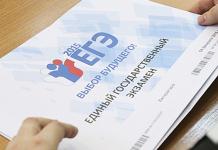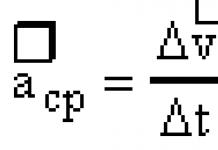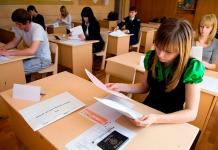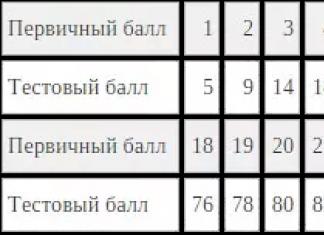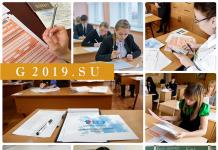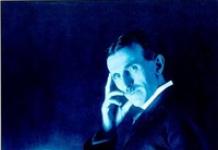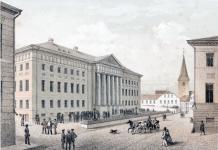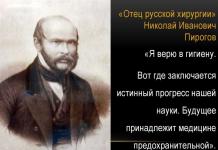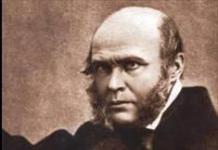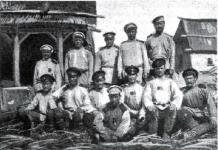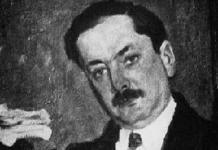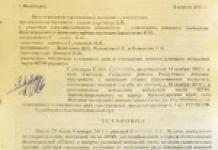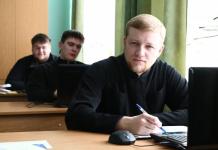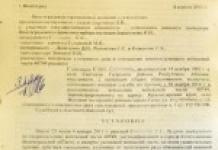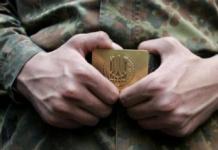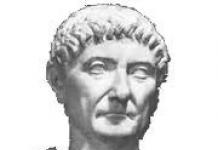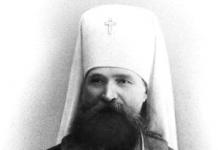Image copyright RIA News Image caption Dmitry Karakozov a few months before the assassination attempt
On September 3 (15), 1866, Dmitry Karakozov was hanged on Vasilievsky Island in St. Petersburg for an attempt on the life of Alexander II.
"This shot cut Russian history in two. A tall, fair-haired, gloomy-silent young man with a long, horse-like face, a deep voice and a heavy gaze was destined to open a new era. The bullet he had prepared for the emperor did not reach its goal; but it was she who brought death to Sipyagin and Stolypin, Volodarsky and Uritsky, Nicholas II, Mirbach, Kirov, countless victims of the Civil War and Stalinist repressions, "wrote the historian Andrzej Ikonnikov-Galitsky.
A small pebble brings down an avalanche. The impetus for the process, the consequences of which will affect 150 years later, was given, in the opinion of contemporaries and later researchers, an ordinary person.
Shot past
Unsuccessful assassination attempts on Alexander II
- May 25, 1867: During a visit to Paris, when the Russian Tsar and Emperor Napoleon III were returning from a military review in an open carriage, the guest was shot twice by Pole Anton Berezovsky. The security officer pushed the assailant, the bullets hit the horse. Napoleon said: "Now we will find out who we were aiming at. If an Italian, then at me, if a Pole, at you." Berezovsky was sentenced to life imprisonment in New Caledonia, replaced by eternal exile, and pardoned 40 years later.
- April 2, 1879: Student Alexander Solovyov, a student who has not completed his studies, fired three times from a revolver at close range at the emperor, who was taking a morning walk around the Winter Palace. He missed, was captured at the scene of the attempt, convicted and hanged.
- November 19, 1879: An attempt to blow up the tsarist train near Moscow en route from Livadia. The People's Will, led by Andrey Zhelyabov and Sophia Perovskaya, knew that the baggage train should go first, but in Kharkov its locomotive broke down, and the tsarist train was the first to move. Several people were injured in the explosion of a mine under the baggage train. The organizers were later arrested and hanged.
- February 5, 1880: Narodnovolets Stepan Khalturin, who got a job as a carpenter in the Winter Palace, laid two pounds of dynamite under the hall where a dinner was to be held in honor of the arrival of the Prince of Hesse. Due to the late Prince's train, the bomb went off when the dignitaries were not in the room. Killed 11 and injured 56 servants and soldiers. Khalturin in 1882 was seized at the time of the murder of Odessa prosecutor Strelnikov by him and another Narodnaya Volya, refused to identify himself, and his identity was established only after the execution.
On April 4, at about four in the afternoon, Alexander II finished his usual walk in the Summer Garden and went out to the Nevskaya embankment.
There were no guards under the emperor in those days, only a policeman walked along the sidewalk from the outer side of the gate, and a non-commissioned gendarmerie was waiting near the carriage, who stood at attention at the sight of the king.
Passers-by, as always, paused to gaze at the sovereign.
Alexander, picking up the long flaps of his greatcoat, was preparing to get into the carriage. At that moment, eyewitnesses heard a loud bang and saw a young man running. The policeman and the gendarme rushed after him, knocked him down, took away the heavy double-barreled pistol and began to beat. Covering his face with his hands, the man shouted: "Foolish, because I am for you, but you do not understand!"
The first thing the tsar did was ask the shooter if he was a Pole. Having received no convenient explanation, he asked why he did it. The terrorist replied: "Your Majesty, you have offended the peasants!" (Such was the inertia of habit that even the regicides in the eyes and behind the eyes called the monarch "majesty" and "sovereign").
Alexander went to a thanksgiving service at the Kazan Cathedral, and the criminal for interrogation at the Third Section on the Fontanka.
In his pocket they found a copy of his proclamation "To Friends-Workers!" I believe that there will be people who will follow my path. "
Written in a deliberately common language, the appeal contained mainly attacks on the rich and calls for property equality, which, according to the author, is paradise.
The arrested person identified himself as a peasant Alexei Petrov and refused further testimony. But with him they found a medical prescription, went to the doctor who knew about the patient that he had come from Moscow, and, most importantly, indicated the hotel in which he was staying. During a search in the room, the gendarmes found an unsent letter to his cousin Nikolai Ishutin and from him they learned the real name of the terrorist.
"Savior"
Several hours later, at a gala reception in the Winter Palace, the head of the Third Section, Prince Dolgorukov, reported a sensation: it turns out that the bullet flew above the emperor's head, because the peasant Osip Komissarov, who happened to be nearby, "took away the villainous hand."
Alexander, of course, wished to see him and immediately, with a thunderous "hurray", raised him to the nobility.
Many contemporaries suspected this was a PR stunt, especially because Komissarov turned out to be from the Kostroma province, like Ivan Susanin.
"I find it very political to invent such a feat," wrote a gendarme officer, a participant in the investigation into the Karakozov case, Pyotr Cherevin, and Minister of the Interior Pyotr Valuev noted that Komissarov's role was not confirmed by the data of the investigation.
Komissarov was awarded money, presented with a house, and began to invite to countless official and social events, where he amazed everyone with his tightness and tongue-tied language.
His wife began to go to expensive shops and ask for gifts, modestly introducing herself: "I am the wife of the Savior."
After about six months, Komissarov disappeared from public space and subsequently died of alcoholism.
The path to terror
After the half-way abolition of serfdom in 1861, the intelligentsia decided that the peasants had been robbed and deceived.
- Liberation by half
One of those who did not want to wait, and even considered Herzen to be a compromiser, was the 25-year-old son of the Penza noblemen, Dmitry Karakozov.
Enough to rejoice! - Musa whispered to me. - It's time to go ahead. The people are liberated, but are the people happy? Nikolay Nekrasov, poet
Later, Nechaev, Zhelyabov, Savinkov, Gershuni, Azef - "demons of the revolution", versatile talents, cold-blooded prudent adventurers, natural-born leaders would come to the Russian terror.
Most of the terrorists of the first wave were losers with poor fortunes and an unstable psyche, who easily passed from euphoria to depression, with unquenchable ambitions and resentment towards the whole world.
"The French revolution happened after Corneille and Voltaire on the shoulders of Mirabeau, Bonaparte, Danton, encyclopedists. And we have expropriators, murderers, bombers - these are incompetent writers, students who have not finished their course, lawyers without trials, artists without talent, scientists without science," - wrote Fyodor Dostoevsky.
Many differed in adolescence by exaggerated religiosity, from which they passed on to equally exalted atheism, replacing God with an Idea. It seems that they wanted not so much to hit the victim and achieve some result, but to be honored with martyrdom.
Karakozov went into the revolution under the influence of his peer Ishutin, who was left an orphan early and was brought up by his parents.
After studying a little at Kazan University, Karakozov transferred to Moscow. Ishutin attended lectures there as a volunteer, since he did not graduate from high school either.
According to the recollections of their mutual friend, later famous judicial journalist Elena Kozlinina, Ishutina "made me climb into heroes" by love for a certain girl of extraordinary beauty, combined with the young man's inability to prove himself in science.
“Karakozov was even grayer and even more embittered than Ishutin: he could not study positively, and, unable to adapt to anything, he migrated from one university to another. their failures, "- said Kozlinina.
Narodism perished not under the blows of the police, but because of the mood of the then revolutionaries, who at all costs wanted to take revenge on the government for the persecution and, in general, to enter into direct struggle with it Georgy Plekhanov, a Marxist
According to the doctors who examined Karakozov after his arrest, he suffered from chronic colitis due to malnutrition and constantly suffered from stomach pains.
Eager to be a leader, Ishutin founded a student circle, which he called simply and uncomplicated: "Organization." The goal was to promote socialism and help poor students by creating a bookbinding workshop on an artel basis.
Within the "Organization" a conspiratorial, however, clumsily, nucleus arose under the pretentious name "Hell".
During the gatherings over tea with a bit of sugar and cheap sausage, Ishutin talked about regicide, which would cause a "general great revolt"; told tales about an acquaintance who allegedly poisoned his father in order to give his inheritance to the cause of the revolution; fantasized that he was part of the leadership of a mighty international committee preparing a coup in all of Europe.
"Many knew about the existence of" Hell ", but treated it as the chatter of young people," Kozlinina said in her memoirs.
As the historian Edward Radzinsky suggests, the gendarmes could not have been unaware of what was happening, but were not averse to the members of the circle throwing out something loud and giving them a reason to tighten the nuts.
According to the testimony of the arrested Ishutins, Karakozov, who joined them in 1865, was mostly silent at the gatherings. And then, without saying anything to anyone, he went to Petersburg to kill the tsar.
According to the testimony of doctor Kobylin, who was prescribing him medications, he had been on the verge of a nervous fever in recent days.
BnServeseafter Pugachev
According to available information, they wanted to declare Karakozov insane: a Russian person, being of sound mind, cannot encroach on the sovereign. Alexander rejected the offer.
Most of the time in the Alekseevsky ravelin, Karakozov prayed.
On August 10, the trial began in the Supreme Criminal Court chaired by Prince Pyotr Gagarin - in the same house of the commandant of Petropavlovka, where the Decembrists were tried exactly 40 years ago.
Karakozov wrote to the tsar: "I ask you for forgiveness as a Christian from a Christian and as a person from a person."
The next day it was announced to him: "His Majesty forgives you as a Christian, but as the Sovereign he cannot forgive."
Karakozov was hanged in the Smolensk field of Vasilievsky Island in front of a large crowd of people. This was the first public execution in Russia after Yemelyan Pugachev.
The sketch of the condemned on the scaffold was drawn by 22-year-old Ilya Repin.
Ishutin was announced to replace the execution with life imprisonment, having already thrown a robe over him. He sat in the Shlisselburg fortress and died in 1879 in the Carian penal servitude in a state of gloomy insanity.
Reaction
Alexander II was enraged and insulted. I gave them freedom, but a bullet at me for that? In front of your father did not dare to utter a word! In vain did Brother Constantine remind the emperor of his own words: "No weakness, no reaction."
What terrible people have risen from the graves! Petersburg was dying. Everything was recalled and avenged. Herds of "well-meaning" rushed from everywhere Mikhail Saltykov-Shchedrin, writer
The head of the commission of inquiry was appointed Count Mikhail Muravyov, nicknamed "Muravyov the Hanger". After the ruthless suppression of the Polish uprising of 1863, he became a monster in the eyes of Europe and liberal Russia and was sent into honorary retirement on the principle: "The Moor did his job." Now the iconic character is back in politics.
During the highest audience, Muravyov demanded a purge of the government. "They are all cosmopolitans, adherents of European ideas," he said. Thus, for the first time in Russia, the word "cosmopolitan" was used as a political label, which later fell in love with Stalin.
The governor-general of St. Petersburg Alexander Suvorov (the grandson of the great commander), the chief of the gendarmes Vasily Dolgorukov, and the minister of education Alexander Golovnin, who "dismissed the youth," immediately lost their posts.
They were replaced by famous retrogrades: Fyodor Trepov, whom Vera Zasulich would shoot at 12 years later, Pyotr Shuvalov, who in fact received the prime minister’s powers, and Dmitry Tolstoy, who was soon nicknamed "the curse of the Russian school."
The overload of loyal statements becomes tiresome. Local authorities unreasonably excite them with clerical receptions Pyotr Valuev, Minister of Internal Affairs
The Sovremennik magazine was closed, although the editor-in-chief Nikolai Nekrasov tried to save his brainchild by composing an ode to Muravyov, of which he repented to death.
Immediately after the "miraculous rescue", the patriots who drank in joy began to tear off the hats from passers-by, who, in their opinion, were not jubilant enough, and beat the long-haired (this is how students walked).
Muravyov died two days before the sentencing of Karakozov, but the tsar still did not want to hear about liberalization.
Lost time
Image copyright RIA News Image caption Historians call Alexander II a victim of indecision and inconsistency and sometimes compare with Mikhail Gorbachev"It is dangerous to start reforms in Russia. But it is much more dangerous to stop them," writes Radzinsky.
Alexander lost his main support - the sane supporters of progress within the framework of stability.
The ideas of the radicals were dubious, and the methods were sometimes terrible, but their sacrifice aroused sympathy, and the policy of the authorities irritated.
The government is now not supported by anyone Nikolai Milyutin, Minister of War
Karakozov's prediction about the people who will follow him came true one hundred percent.
In 1869, Nechaev composed the eerie Catechism of a Revolutionary, which inspired Fyodor Dostoevsky to write the visionary novel Demons and Vladimir Lenin to create a "new type of party."
In 1878, the jury demonstratively, to the applause of even parts of the high society, acquitted Vera Zasulich - despite the fact that the jury, of course, was not nihilistic.
In 1877-1878, the emperor tried to unite the society with a war for the "liberation of the Slavic brothers from the Ottoman yoke."
Enthusiasm arose, but quickly disappeared when the Bulgarians did not show much gratitude, the geopolitical fruits were reaped by England and Germany, and Russia received only Annin's checkers for the aide-de-camp, and endless rows of graves of ordinary soldiers, in the cynical expression of General Dragomirov, "holy cattle".
Only in 1880, Alexander, who had survived five assassination attempts by that time, returned to the path of reforms, placing Mikhail Loris-Melikov with his "dictatorship of the heart" at the head of the government.
But the emperor's hunting machine had already picked up steam.
Like all over the world
Terrorism as a means of political struggle is a relatively new phenomenon.
Ancient and medieval history remembered only two such organizations, and both operated in the Middle East: the Jewish Sicarii in the 1st century AD and the Shiite sect of the Nizari ("Assassins"), which in the 12th-13th centuries terrified the crusaders and local Sunni rulers.
Probably, the aristocracy found murder from around the corner a base deed, and ordinary people did not know how to create effective conspiratorial structures. The first weapon was war, the second - a riot.
A new type of revolutionary began to emerge. A gloomy figure was outlined, illuminated as if by hellish flame, which, with a gaze breathing challenge and revenge, began to make its way among the terrified crowd. That was a terrorist! Sergey Kravchinsky, Narodnolets
Terrorism flourished in the 19th century with the rise of an educated middle class. Russia was no exception and was by no means ahead of the rest of the world in this matter.
Until 1900, British Prime Minister Spencer Percival and his Japanese counterpart Toshimiti Okubo, US Presidents Abraham Lincoln and James Garfield, French President Sadi Carnot, Austro-Hungarian Empress Elizabeth (Sissi), the Persian Shah Nasser al-Din and the Italian king became victims of political terror. Umberto I, not counting figures of a smaller scale.
There is an important difference between the past and present terrorism, not in favor of modernity.
Russian Narodnaya Volya and Western anarchists and nationalists killed the rulers and their high-ranking henchmen, who, with more or less reason, were considered tyrants and enemies of society. It never occurred to anyone to blackmail the authorities by blowing up and seizing innocent and innocent ordinary people.
Some members of the organization's opposition groups conducted mostly successful subversive activities among the social masses of the Russian population in the agitational and propaganda sphere, promoting Western values and Western socialist ideas that had been actively operating for one and a half to two decades in the Russian Empire, before the 1905 revolution took place in Russia. years, their side task of the second plan was to process and recruit new members to the opposition organization in the European and Russian centers. For example, Mikhail Gots and Minor toured foreign centers, recruiting fresh forces among the students to send them to revolutionary work in Russia, mostly seasoned revolutionaries relied on romantic and inexperienced youth 15-16 years old), later the recruited students took specialized courses in foreign centers on agitational and propaganda activities, as well as conspiracy.
The rest of the elite members of the opposition organization were structured into a separate combat group, which specialized in thorough planning operations with the further implementation of bloody and terrifying sabotage and terrorist acts on the territory of the Russian Empire, the training of this group was carried out by experienced instructors.
Such a scale of subversive activity, one wonders what it was in the Russian Empire.
But contemporaries of that period rightly said that the All-Russian Emperor Nicholas II was the most humane Emperor of all Europe.
The most important role in the revolutions of Russia at the beginning of the 20th century was played by the massive propaganda of Western socialist ideas among all classes of the Republic of Ingushetia, the agitational "word" sown in the social strata, and further incitement gave birth to demonstrations, rallies, strikes, strikes, riots with disobedience to the legitimate authorities, to which they actually led liberal provocateurs, but this is only a visible iceberg, to them were added public calls for active mass terror, motivating the call by the fact that the goal could not be achieved peacefully.
In 1904, on July 28, in St. Petersburg, on Izmailovsky Prospekt, near the Varshavsky railway station, the Minister of Internal Affairs V.K. Pleve was killed. Socialist-Revolutionary, student Yegor Sozonov, who threw a bomb into his carriage

Extremist organizations and parties were engaged in the creation of basic centers, which included: printing houses, safe houses, laboratories for the manufacture of explosives and the purchase of chemical materials, workshops for the manufacture of weapons, training of militants by instructors - specialists in the use of projectiles, and the possession of weapons, in schools of this kind. several dozen militants were trained, also the assortment of knowledge included possession of secrecy, forgery of passports, identity cards, and other documents, prohibited literature in the Russian Empire was smuggled from abroad. (Memoir of the Socialist-Revolutionary V. Zenzinov "Experienced" New York. Publishing house named after Chekhov).
After the explosion at P.A.Stolypin's dacha (1906)

Operation of the Security Department to detain anarchists in the Russian Empire

Those who graduated from the courses in educational bases safely dispersed to the cities of the Russian Empire, and in the places of their deployment they created similar workshops for the production of bombs, in the reports of the newspapers of tsarist Russia, and in particular in memoirs, one can find vivid descriptions of those days that such and such a chemical laboratory exploded in such and such an apartment or private house through negligence during the manufacture of a bomb or news of the seizure of bombs with weapons during a successful police operation.
Also, organized groups published on printing presses specialized literature of a methodological nature and recommendations for carrying out sabotage and terrorist acts, the mentioned literature contained special recommendations of professional instructors.
A basket with bombs, which was in the Bolshevik laboratory school in the village of Haapala (1907)


For example, the uprising in Nizhny Novgorod on December 8, 1905, right in the shops of the Sormovo plant and practically openly, workers began to make homemade edged weapons and bombs. Turner Parikov assembled a homemade cannon according to preliminary drawings, and shells were cast for it in the foundry.
As a result, several armed detachments were formed, the most efficient of which was a combat workers' squad headed by Pavel Mochalov, numbering about 200 people. Another such detachment was formed in Kanavino, headed by Sergei Akimov.
A factory inspector who was at the factory reported directly to the local authorities: "The workers are stocking up on huge weapons, the forges and sharpeners are busy, a lot of steel is being taken without permission, and files are being altered and so on."
"The situation in Sormovo is extremely dangerous. Tomorrow there may be unrest. There are no troops."
On December 12, at 10 o'clock in the morning, an uprising began at the plant. Detachments of workers began to take control of the surrounding area. All day there were skirmishes and skirmishes, both sides suffered losses.
On December 13, the chief of the gendarmes, Colonel Levitsky, reported to his superiors: "The actions of the telegraph, telephone, the station in the hands of the committee headed by Akimov have been forcibly stopped. In Sormovo, the barricades and telephone poles have been cut down." By order of the governor, Cossacks and a company of gendarmes with cannons were deployed to Sormovo.
The uprising was attended not only by the Social Democrats, but also by representatives of other political trends, including the Socialist Revolutionaries, does not diminish the role of the Social Democrats and their active functionaries in organizing, preparing and conducting it. The Nizhny Novgorod committee of the RSDLP remained the inspiration behind the uprising that engulfed the Nizhny Novgorod proletariat, employees, and youth. The main thing for the Social Democrats during the revolution was not who fights on the barricades, but that there were as many fighters as possible, regardless of their political views and criminal past.
The main Sormovo barricade near the Sormovo parish school (1905)

Does anyone remember the October 1905 appeal of V.I. Ulyanov to the combat committee:
“I am horrified, by God with horror, I see that they have been talking about bombs for more than six months and have not done a single one! they themselves arm themselves, some with a revolver, some with a knife, some with a rag with kerosene for arson ...
Some will immediately undertake the murder of a spy, blowing up a police station, others - an attack on a bank to confiscate funds ... Let each detachment learn at least from beating the policemen: dozens of victims will pay off with interest by providing hundreds of experienced fighters ...
Even without weapons, the detachments can play a serious role ... climbing to the top of houses, upper floors, etc., and showering the army with stones, pouring boiling water ...
The murder of spies, policemen, gendarmes, the bombing of police stations, the release of those arrested, the seizure of government funds ... such operations are already being carried out everywhere ... "Lenin, October (16th and later) 1905 (Lenin V.I. Collection of works V. 11. S. 336-337, 338, 340, 343.)
The great conspirator Lenin in makeup during the last underground

V. I. Ulyanov often changed fake passports for other names and surnames, traveled all over Western Europe, often lived in Germany, Switzerland and London under the name Richter.
Pass to the Sestroretsk Arms Factory in the name of K.P. Ivanov

The scale of terrorism at the beginning of the century, according to statistics from Anna Geifman, starting in October 1905, 3,611 government officials were killed and wounded in the Russian Empire.
By the end of 1907, this number had increased to nearly 4,500. Together with 2,180 killed and 2,530 wounded individuals, the total number of victims in 1905-1907 Geifman estimates the number of more than 9,000 people. According to official statistics, from January 1908 to mid-May 1910, there were 19957 terrorist acts and expropriations, as a result of which 732 state officials and 3051 private individuals were killed, while 1022 state officials and 2829 individuals were injured.
Believing that a significant part of local terrorist attacks did not fall into official statistics, Geifman estimates the total number of those killed and wounded as a result of terrorist attacks in 1901-1911 at about 17,000 people.
Expropriations became a mass phenomenon after the start of the revolution. So, in October 1906 alone, 362 cases of expropriation were recorded in the country. In the course of expropriations, according to the Ministry of Finance, from the beginning of 1905 to the middle of 1906, the banks lost more than 1 million rubles.
In large cities of Russia, the Socialist Revolutionary Party was the most active in terrorist actions.
Later, some of the transformed and modernized political parties and groups described below entered the State Duma of the Russian Empire (the Manifesto of August 6, 1905, Emperor Nicholas II established the State Duma).
Inauguration of the State Duma and State Council. Winter Palace. April 27, 1906. Photographer K.E. von Gunn

Tauride Palace

Rights:
Russian collection (1900-1917).
Union of the Russian people (1905-1917).
Union of Russian people (1905-1911, formally until 1917).
Russian Monarchist Party (1905-1917, from 1907 - Russian Monarchical Union).
United Nobility (1906-1917).
Russian People's Union named after Archangel Mikhail (1907-1917).
All-Russian National Union (1908-1912).
Moderate Right Party (1909-1910).
All-Russian Dubrovinsky Union of the Russian people (1912-1917).
Patriotic Union (1915-1917).
Union October 17 (1905-1917).
Centrist:
Constitutional Democratic Party (1905-1917). The leader is P. N. Milyukov.
Trade and Industrial Union of the Russian Empire (1905).
Progressive Economic Party of the Russian Empire (1905).
Commercial and Industrial Party of the Russian Empire (1905-1906).
Party of the Legal Order (1905-1907). Leader
Peaceful Renewal Party (1905-1907).
Party for Democratic Reforms (1906-1907).
Progressive Party (1912-1917).
Left:
Russian Social Democratic Labor Party (since 1898).
Bolsheviks.
Mensheviks.
Group "Forward" (1909-1913).
Interdistrict Organization of the United Social Democrats (1913-1917).
Party of Socialist Revolutionaries (1902-1921).
Labor People's Socialist Party (1905-1918, People's Socialists, Popular Socialists).
Union of Socialist-Revolutionary-Maximalists (1906-1911, Socialist-Revolutionary Maximalists).
Labor group (1906-1917).
People's will
Black redistribution
Young Party "Narodnaya Volya"
Land and Freedom
freedom or death
Avengers
Young Russia
Group "Forward"
The group of Nikolaev, Belevsky, Serebryakov. P. Nikolaev
Group of Popko, Lizogub, Osinsky
Combat organization
Northern Region Flying Trooper
Flying Combat Unit of the Central Region
Moscow opposition to the Socialist Revolutionary Party
Union of Socialist Revolutionaries Maximalists
Fighting squad of the Bolsheviks.
Agrarian terrorism.
Anarchterrorism.
A group of communist anarchists.
The group of communist anarchists "Terror".
A united group of anarchists and maximalists.
A group of communist anarchists "Honghuza".
Anarchy group.
The group of communist anarchists "Red Hundred".
Group "Black Raven".
Group "Red Banner".
Flying detachment of communist anarchists.
Free group of political terrorists.
Chernoznamentsy
Ukrainian:
Ukrainian Socialist Party (1900-1904).
Revolutionary Ukrainian Party (1900-1905).
Ukrainian People's Party (1902-1907).
Ukrainian Party of Socialist Revolutionaries (1903-1918).
Ukrainian Democratic Party (1904).
Ukrainian Radical Party (1904-1905).
Ukrainian Social Democratic Union ("Splilka" 1904-1913).
Melenevsky. She was a member of the RSDLP (Menshevik).
Ukrainian Democratic-Radical Party (1905-1908).
Ukrainian Social Democratic Labor Party (1905-1918).
Ukrainian National Democratic Party.
Ukrainian revolutionary party ("samostiinik").
Ukrainian Radical Democratic Party.
Belarusian:
Belarusian socialist community (1902-1918).
Constitutional Catholic Party of Lithuania and Belarus. This conservative clerical party during the years of the revolution of 1905-1907. acted on the territory of Belarus. It was created on the initiative of the clergy and Poles living in Belarus. The ideological basis of the party was Catholicism. The party's program (1906) proclaimed the main task of uniting all Catholics-Poles, Lithuanians, Belarusians “into one powerful party” with the aim of fighting the tsarist government “for the development and prosperity of the region”. Protecting the religious feelings of believers from Orthodox religious expansion was the main task of the party. 1907 the governor-general of Vilna dismissed it.
Jewish:
General Jewish Workers' Union in Lithuania, Poland and Russia "Bund" (early 1890s-1921).
Poalei Zion Jewish Social Democratic Labor Party (1900-1928).
Zionist Socialist Labor Party (1904-1917).
Socialist Jewish Workers' Party (SERP, 1906-1917).
Folksparty (People's Party, 1906-1917).
Jewish Territorialist Workers' Party.
United Jewish Socialist Workers' Party (1917-1920).
Armenian:
Social Democratic Party Hnchakyan (since 1887).
Armenian Revolutionary Federation "Dashnaktsutyun" (since 1890).
Armenian Social Democratic Labor Organization.
Dfay.
Mudafe.
Ittifag.
Esams.
Muslim:
Muslim Social Democratic Party "Gummet" (Azerbaijan, 1904-1920).
Ittifak al-Muslimin ("Union of Muslims") (1905-1907).
Muslim Democratic Party "Musavat" (Azerbaijan, 1911-1920).
Ichtimai-e-Amiyun (Social Democracy, 1906-1916).
Adalat ("Justice", 1916-1920).
Alash Party (Kazakh, 1917-1920).
Polish:
International Social Revolutionary Party "Proletariat" (First or Great Proletariat, 1882-1886.
Social-revolutionary party "Proletariat" (Second or Small Proletariat, 1888-1893 ..
PPS-Proletariat (Third Proletariat, 1900-1909). Leader - L. S. Kulchitsky.
Polish Socialist Party (since 1892).
Social Democracy of the Kingdom of Poland and Lithuania (since 1893).
National Democratic Party of Poland (since 1897).
Polish Progressive Democratic Union (since 1904).
Party of Real Politics (since 1905).
The Polish Socialist Party is a leftist (since 1906).
Polish Socialist Party - revolutionary faction (1906-1909).
"Warsaw military squad".
Enlightening people
Polish League,
People's Scarb,
People's Workers' Union,
Polish Union of the White Eagle
Polish People's Union
Party of Polish Statehood,
Union of National Education,
Union for the Revival of the Polish People,
Union of Polish Youth,
Union of Polish Workers,
Circle of struggle with Russia.
Finnish:
Fennomans (19th century).
Svekomans (Shvedomans, 1860s-1906).
Liberal Club (1877-1880).
Finnish Party (1879-1918).
Liberal Party (1880-1918).
Swedish Party (1882-1906).
The Women's Union of Finland (1892-1938).
The Young Finnish Party (1894-1918).
Social Democratic Party of Finland (since 1899). The leader is V. Tanner.
Constitutional Party (1902-1918).
Finnish Party of Active Resistance (Party of Activists, 1904-1908).
Finnish Coalition Party (1905-1907).
Finnish Progressive Party (1905-1908).
Union of Rural Workers (1905-1915)
Finnish People's Party (1905-1918).
Swedish People's Party (since 1906).
Agrarian Union (1906).
Workers' Christian Union of Finland (1906-1923).
People's Socialist Party of Finland (1913-1915).
Lithuanian:
Lithuanian Social Democratic Party (lit. Lietuvos socialdemokratų partija, LSDP). Common name: Lithuanian Social Democracy. The oldest political party in Lithuania. It was created in 1896.
Lithuanian Democratic Party (lit. Lietuvių demokratų partija, LDP). 1902-1920. She advocated for Lithuanian autonomy in the Russian Empire, for national unity, in support of wealthy peasants. During the First World War, it experienced several splits and became inactive. It was officially disbanded in 1920.
Lithuanian Peasant Union (lit. Lietuvos valstiečių sąjunga, LVS). 1905-1922. Created by a group of members of the Lithuanian Democratic Party. He took left-liberal positions, advocating that the land should belong only to those who work on it. United in the Lithuanian Peasant People's Union.
Lithuanian Christian Democratic Union (lit. Lietuvių krikščionių demokratų sąjunga, LKDS). 1905-1906. Not receiving support from the Catholic Church, the party disintegrated.
National Democratic Party (lit. Tautiškoji demokratų partija, TDP). 1905-1913. Created by a group of nationalist-minded members of the Lithuanian Democratic Party led by Jonas Basanavičius. She advocated the political autonomy of Lithuania, democratic governance and self-government, the exclusive rights of Lithuanians, the Lithuanian language and culture. After 1907, the activity of the party almost ceased. The future president of Lithuania, Antanas Smetona, was a member of the party.
Party of National Progress (lit. Tautos pažangos partija, TNP). 1916-1924. It merged with the Union of Lithuanian Landowners to form the Union of Lithuanian Nationalists.
Estonian:
Estonian National Progressive Party (Estonian Eesti Rahvameelne Eduerakond, ERE; 1905-1917). The first political party in Estonia, founded by the lawyer, public figure and publisher Jaan Tõnisson during the Russian Revolution of 1905. Constitutional monarchy, autonomy, Estonian nationalism. Ally of the Constitutional Democratic Party. Reorganized into the Estonian Democratic Party.
Estonian Social Democratic Workers' Association (Est. Eesti Sotsiaaldemokraatlik Tööliste Ühendus; 1905). Social democracy, federalism, autonomy. In fact, it was defeated during the suppression of the First Russian Revolution of 1905-1907, the leaders were repressed or emigrated.
Baltic Constitutional Party (Estonian Balti Konstitutsiooniline Partei; 1905-1917). Created by the Eastsee Germans. Another name is the Constitutional Party of Estonia (Est. Eestimaa Konstitutsiooniline Partei). Constitutional monarchy, conservatism.
Estonian Socialist Revolutionary Party (Est. Eesti sotsialistide-revolutsionääride Partei, ESRP; 1905-1919). Created as a branch of the Russian Socialist-Revolutionary Party. Independent party from September 1917. Split over the issue of Estonian independence, after which the left wing joined the communists. Joined the Independent Socialist Party of Workers.
Latvian:
Party of Revolutionary Socialists of Latvia (until 1913 - Latvian Social Democratic Union). It was formed in 1900. The main program ideas were the social and national liberation of the working people of Latvia, the creation of an independent Latvian state.
As can be seen from the subsequent events of the 1917 revolution, in addition to the internal problems of the Russian Empire, there were additional - Russian liberal opposition organizations operating for decades inside the Russian Empire and beyond, in particular abroad in Switzerland (Geneva), the center of Russian political emigration and the main headquarters of the Russian revolution, skillfully manipulating and inciting national, religious, and social strife, skillfully playing on the shortcomings of the system of the Russian Empire, they nevertheless succeeded in the craft of undermining the integrity of the powerful Russian Empire, promoting the ideas of Western socialism in all strata of the population of RI.
Terrorism was originally the work of romantics, eager to remake the life of the people in their own way, for the better, but today's terrorists are far from that. Terror came to Russia, like many other things, from the West. Russian theorists of revolutionary violence (M. A. Bakunin, P. L. Lavrov, Π. N. Tkachev, S. M. Stepnyak-Kravchinsky, and others) formed their views on terrorism in emigration at the end of the 18th century, based on on the experience of the French Revolution and other European radical uprisings. Bakunin's concept of the "philosophy of the bomb" was developed in his "theory of destruction", and the anarchists put forward the already mentioned doctrine of "propaganda by action". PA Kropotkin defined anarchism as "constant agitation with the help of the word spoken and written, a knife, a rifle and dynamite."
Our theorists marveled at the feats of the Western rebels, their secret organizations and tactical forms of violent changes in the social system. Everything seemed to be relatively simple and efficient. And already in 1866 D. V. Karakozov made an attempt on the life of Alexander II, which failed. The perpetrator was hanged. Ten years later, the Polish emigrant A. Berezovsky was attempting to assassinate the Tsar in Paris. A year later, the gendarme general Mezentsev was killed. The process intensified. In 1879, the Kharkiv governor Kropotkin (a cousin of the famous anarchist) was killed and at the same time a terrorist organization "Narodnaya Volya" was created, which passed a "death sentence" to Alexander II. Eight attempts were made, the last of which, carried out on March 1, 1881, was successful. The heir received an ultimatum demanding deep political change. However, the people did not follow the terrorists, and soon the terrorist organization collapsed.
The peasantry in Russia, which constituted the majority of the population, as a rule did not share the ideas of the terrorist bombers. A different position was taken by the educated part of society, which was due to the social injustice that existed at that time in Russia, with which the peasant mass was reconciled. However, it must be admitted that the majority of educated people sympathetic to terrorists, as it turns out later, did not fully understand the consequences of terrorism. Their sympathy could be due to the ambivalent Russian mentality, which was very accurately expressed by M. Tsvetaeva: "If I see violence, I am for the victim, and if the rapist runs away, I will give him shelter."
It is important to note that a distinctive feature of pre-revolutionary Russian terrorism was the benevolent attitude towards terrorists of an educated society. People who denied the tactics of terror for moral or political reasons were in an absolute minority. The arguments for justifying revolutionary terror were drawn from crushing assessments of Russian reality. They saw the terrorists as devotees of the idea, sacrificing their lives for the sake of lofty goals. This was facilitated by the acquittal of the jury in the case of the populist Vera Zasulich, who attempted the life of the St. Petersburg mayor FF Trepov for cruel treatment of political prisoners. Alarmed by the news of the unjust punishment of the political prisoner Bogolyubov, committed on the orders of Trepov, Zasulich shot at the mayor. The defender's speech ended with the words: "Yes, she can leave here convicted, but she will not come out disgraced ..." A significant part of the educated society admired the terrorists. And Zasulich later became the organizer of the Emancipation of Labor group and a member of the editorial boards of Iskra and Zarya.
At the beginning of the reign of Nicholas II (1894-1917), there was a consolidation of revolutionary forces of various orientations - socialist-revolutionaries, Socialist-Revolutionaries, anarchists, nationalists.
The Socialist Revolutionary Party, formed in 1901, adopted the tactics of terrorism, and in the same year the Fighting Organization of the Socialist Revolutionary Party (which disintegrated at the beginning of 1907) was created. The first political assassination in Russia was committed by a student expelled from the university, Pyotr Karpovich. On February 4, 1901, he fatally wounded the Conservative Education Minister Η. P. Bogolepov, who advocated sending students into soldiers. In April 1902, the Socialist-Revolutionary S.V. Balmashov killed the Minister of Internal Affairs D.S.Sipyagin - the inspirer of the Russification policy on the national outskirts and the initiator of brutal punitive measures against popular movements. And in July 1904 the Socialist-Revolutionary E. S. Sazonov killed Sipyagin's successor in this post - V. K. von Plehve, who was an extreme reactionary. In February 1905, this stage of terrorism ended with the assassination of the Tsar's uncle, the Moscow Governor-General, Grand Duke Sergei Alexandrovich. These were the loudest attacks. The Azef case occupies a special place in the history of Russian terrorism during these years.
Yevno Azef, the son of a Jewish tailor, in 1892, while a student at the Polytechnic Institute in Germany, offered his services to the Police Department. Returning to Russia, he became a prominent figure in the Socialist-Revolutionary movement, following the instructions of the Minister of the Interior Plehve. In 1908 Azev was exposed and declared a provocateur.
The first Russian revolution (1905-1907) began with a powerful outburst of terrorism from consolidated terrorist organizations of all kinds. He covered the whole country. Between October 1905 and the end of 1907, 4,500 government officials were killed and maimed, 2,180 were killed and 2,530 were wounded. In 1907, an average of 18 victims were accounted for by terrorists every day. In 1907, the revolution began to recede. From January 1908 to May 1910, 19,957 terrorist attacks and revolutionary robberies were recorded. It was not professional terrorists who killed police officers, blew up houses, carried out expropriation (robbery for the needs of the revolution) in houses, trains and steamers, but hundreds and thousands of those who were captured by the revolutionary element. The principle of "propaganda by action" worked. A classic partisan war was unfolding in Russia.
Only the practice of military courts, introduced by the energetic Prime Minister P.A.Stolypin, was able to bring down the wave of revolutionary terror. As Minister of Internal Affairs, and then Chairman of the Council of Ministers (since 1906), in the era of reaction, he determined the government course, was the organizer of the counter-revolutionary coup on June 3, 1907, and the leader of the agrarian reform, called Stolypin. Stolypin began to develop the project "Nationalization of Capital" - a system of protective measures against Russian enterprises. Therefore, the hunt for him was serious. In August 1906, the maximalist Social Revolutionaries blew up Stolypin's dacha. 27 people were killed, the children of the prime minister were injured. The last major case in the history of pre-revolutionary terrorism was the assassination of Stolypin. On September 1, 1911, compromised by his connections with the security department, anarcho-communist Dmitry Bogrov mortally wounded the Prime Minister in the building of the Kiev Opera in front of the Tsar and 92 security agents. The killer was soon hanged, but that made little difference. Nadezhda of Russia, P. A. Stolypin, died on September 5 without implementing the most important reforms for Russia.
The Social Democrats declared their rejection of systematic terror, considering this tactic unpromising. However, the practical Bolsheviks adopted the practice of expropriation, in addition, they practiced the destruction of informants and terror against the supporters of the "Black Hundred".
This position was shared by Lenin and other leaders of the party and state. The main direction of Bolshevik terrorism in those years was expropriation. This direction was directed by LB Krasin. The most active activity developed in the Caucasus. A group led by Semyon Ter-Petrosyants (Kamo) carried out a number of expropriations. The loudest act was the "Tiflis ex" on June 12, 1907, when the Bolsheviks blew up two postage carriages with money and seized 250,000 rubles, which were directed to the needs of the "Bolshevik center" abroad. Terrorism also developed on the outskirts of the empire, in Poland, on the territory of Lithuania and Belarus, in the Caucasus, in Armenia and Georgia. The centers of anarchist terror were Bialystok, Odessa, Riga, Vilno, Warsaw. Anarchist terror was distinguished by its orientation against the possessing classes and the widespread use of suicide bombers.
The February revolution and the Bolshevik coup (1917) marked a new stage in the history of Russian terrorism. Establishing their power, the Bolsheviks faced opposition from a broad coalition of political and social forces. The opponents of the Soviet regime, naturally, turned to the tactics of terrorism. But then an important detail became clear, which was confirmed in the subsequent years of Soviet power: terrorism is effective only in a society that is following the path of liberalization. The totalitarian regime opposes the scattered terrorism of anti-government forces with systematic and devastating state terror. During the Civil War, the ambassador of Germany, Count Mirbach (1918), the communists M. S. Uritsky (1918) and V. M. Zagorsky (Lubotsky) (1919) were killed. In 1918, an attempt was made on Lenin's life. In 1918-1919. several explosions were carried out in public places. The Red Terror quickly destroyed the anti-Soviet underground. The terrorist movement has lost both personnel and support in society. Criticism of the government and sympathy for terrorists is a luxury available to a person living in a more or less free society. In addition, the communist regime created a powerful and well-thought-out system for the protection of high-ranking officials of the state. Terrorist attacks against the leaders have become almost impossible. After the end of the Civil War, several terrorist attacks took place abroad: the Soviet diplomatic courier Theodor Nette was killed in Latvia (1926) and the plenipotentiary representative P.L. Voikov in Poland (1927). The Soviet secret services solved this problem as well. By the late 1930s, a significant portion of the emigration was under control. The tradition of Russian terrorism has been destroyed.
The high-profile case of the mid-1930s - the assassination of S.M. Kirov (1934) - served as an impetus for a wave of repression that swept across the country, but it was most likely organized by the USSR special services at the direction of Stalin. During these years, the country was engulfed in massive political repressions (political state terror). After the war, terrorist activities continued in the form of offensive and retaliatory terrorism in the Baltics and Western Ukraine. Partisan movements operating in the Baltics and Western Ukraine carried out acts of terrorism both against representatives of the Soviet authorities and against Soviet activists from local residents. By the early 1950s, anti-Soviet rebel movements using terrorist methods of struggle were destroyed there as well.
Thus, terrorism is leaving the life of Soviet society for decades. In the 60s-80s of the XX century. terrorist acts were isolated: in 1973 - the explosion of an airplane flying from Moscow to Chita; in 1977 - three explosions in Moscow (in the subway, in a shop, on the street) by Armenian nationalists - members of the illegal Dashnaktsutyun party Zatikyan, Stepanyan, Baghdasaryan; in 1969 an army lieutenant, later recognized as mentally ill, fired a pistol at Leonid Brezhnev, who was driving in an open car; in addition, there were several attempts to hijack an aircraft to Israel in the 1970s.
In 1990, A. Shmonov, who tried to shoot M. Gorbachev, was declared insane. Perhaps it was so beneficial for the authorities not to reveal the real dissatisfaction of the people with the country's leadership. Several terrorist attacks were committed during the years of perestroika, among them an attempt to hijack an aircraft by the Ovechkin family ("Seven Simeons") in 1988.
A new wave of terrorist attacks began only in the second half of the 1990s. The collapse of the USSR, the weakening of state institutions, the economic crisis, the formation of a black market in weapons and explosives, the rapid growth of criminal violence (so-called "showdowns", contract killings), uncontrolled migration flows, the war in Chechnya and other factors created the preconditions for another powerful surge in terrorism ... Individual terrorist attacks are carried out by small groups of a radical communist orientation, for example, the explosion of the monument to Nicholas II near Moscow (1998), the explosion at the reception of the FSB of Russia in Moscow (1999), the mining of the monument to Peter I in Moscow. All these actions took place without human casualties.
The subsequent series of terrorist acts associated with the war in Chechnya was much more dangerous. These are explosions of houses, explosions in streets and markets, seizure of public buildings and hostages. Terrorist attacks are committed in Dagestan, Volgodonsk, Moscow. Among the most notorious actions is the seizure of a maternity hospital in the city of Budennovsk by a detachment of terrorists led by Shamil Basayev in the summer of 1995. The terrorist attack ended in humiliating negotiations on the part of the Russian authorities and the return of terrorists to territory not controlled by the Russian army. The seizure of the Theater Center on Dubrovka in Moscow by a detachment led by Movsar Barayev in the fall of 2002 ended with an assault, the destruction of terrorists and the release of hostages.
During perestroika, the collapse of the Soviet state and the inconsistent democratic and market reforms of Russia and other countries formed in the post-Soviet space at the turn of the century, violent terrorist activities of ethnopolitical, separatist, nationalist and religious motivation acquired a massive character (Azerbaijan, Armenia, Georgia, Tajikistan, Uzbekistan , Chechnya, etc.), which was examined in detail by the author on the basis of a study of criminal cases and other documentary sources in separate chapters of previous works.In this terrorist act, perhaps for the first time in our country, cruelty towards innocent people was manifested. According to the terrorists, they fought against the Soviet system and took revenge on the Russians "no matter who it is: women, children, old people - the main thing is the Russians." (Bobkov F. D. Kremlin and power. M., 1995.S. 290).
More attention was paid to this topic in the works of foreign researchers. The American historian N. Neimark was one of the few who tried to create a general concept of the history of Russian revolutionary terrorism, which he outlined in the article "Terrorism and the Fall of Imperial Russia." Neimark believed that the actions of the terrorists, who considered attempts at government reforms inadequate, were used by officials to roll back the reforms. The state, in his opinion, taking extraordinary measures against the revolutionaries, turned from the path of its own progress and building a civil society.
The origins and immediate reasons for the use of terrorist methods in the revolutionary struggle
Among the reasons that led to the transition of revolutionaries to the methods of terror, historians highlight the incompleteness of the reforms of the tsarist government, the rejection of revolutionary ideas by the masses, the passivity of society in relation to the revolutionary movement, revenge on the authorities for repression, including in relation to terrorists, excessive personification of power by revolutionaries. Terror was seen by its ideologists, on the one hand, as a way to disorganize the government and induce it to reform; on the other hand, as a way to push the people to revolt, to speed up the course of history.
The beginning of the terror
Karakozov's actions were condemned by a number of well-known leaders of the revolutionary movement, including A. I. Herzen, M. K. Elpidin, N. Ya. Nikoladze. At the same time, Karakozov's shot made a strong impression on the revolutionary youth. BP Kozmin, a researcher of the 1860s, wrote: "Karakozov and his assassination attempt was a common topic of conversation among the revolutionary youth of that time ...".
The first successively terrorist organization was founded by S. G. Nechaev in 1869, the People's Repression Society. Nechaev drew up a list of persons - the first candidates for destruction, but the only terrorist act he carried out was the murder of a member of his organization, student I. I. Ivanov, who refused to obey Nechaev. The murder was exposed and compromised the methods of terror in the revolutionary movement for ten years.
A new upsurge in terrorism in the revolutionary movement took place in 1878, starting with Vera Zasulich's shot at the St. Petersburg mayor F.F. Trepov - thus she took revenge on Trepov for his order to flog the prisoner of the Peter and Paul Fortress Bogolyubov, who did not want to take off his headdress in front of Trepov. The jury, to the surprise of the government, acquitted Zasulich. This served, on the one hand, to spread terrorist ideas among some of the revolutionary youth, and on the other, to tighten the repressive measures of the tsarist government. Since then, similar cases of political assassination and violent acts have been brought before military courts, not juries.
The shot by Zasulich was followed by a number of other terrorist acts: an attempt on the life of the head of the Odessa gendarmerie, Baron G. E. Geyking, the prosecutor of Kiev M. M. Kotlyarevsky, and the agent of the detective police A. G. Nikonov. On August 4, 1878, a landowner S.M.Kravchinsky stabbed the chief of gendarmes, Adjutant General N.V. Mezentsev, in the center of St. Petersburg. The revolutionary terror continued in the next year, 1879.
The failure of “going to the people”, the seeming impracticability of a popular uprising in the coming years, on the one hand, and government repression, on the other hand, pushed some of the populists towards terrorist methods of political struggle.
"Narodnaya Volya"
Narodnaya Volya had about 500 active members; only members and closest agents of the Party's Executive Committee, as well as several gunmen, technicians and observers, were involved in terror. Of the rank-and-file members of Narodnaya Volya, 12 people took part in the preparation and implementation of all eight attempts on the emperor's life.
The purpose of the terror was the disorganization of the government and the agitation of the masses. The Narodnaya Volya members justified the need for terror by the persecution of the Narodniks by the authorities and by the personal responsibility of Alexander II for the repression, which was recorded by the Executive Committee of the Narodnaya Volya in the death sentence to the tsar.
A real "hunt" was arranged for Alexander II. Three attempts to arrange a train wreck were made in the fall of 1879. On February 5, 1880, S.N.Khalturin made an explosion in the Winter Palace, as a result of which the emperor was not injured, although several dozen people were killed and wounded. Finally, on March 1, 1881, a group of Narodnaya Volya members carried out an attempt on the life of Alexander II by bombing, during which the emperor was mortally wounded along with I.I. Grinevitsky, one of the bombers.
After the regicide, the Executive Committee of Narodnaya Volya on March 10 presented the new emperor Alexander III with an ultimatum letter, which declared its readiness to end the armed struggle and "devote ourselves to cultural work for the benefit of the native people." The emperor had a choice:
Or a revolution, completely inevitable, which cannot be prevented by any executions, or a voluntary appeal of the supreme power to the people. In the interests of the home country,<…>in order to avoid those terrible calamities that always accompany the revolution, the Executive Committee turns to your Majesty with advice to choose the second path.
By March 17, all participants in the assassination of Alexander II were arrested and then brought to justice. On April 3, 1881, five First Martyrs: A. I. Zhelyabov, S. L. Perovskaya, N. I. Kibalchich, T. M. Mikhailov and N. I. Rysakov - were hanged.
In total, in 1879-83, more than 70 political People's Will processes took place, in which about 2 thousand people were involved. Vigorous opposition to the activities of the organization on the part of the authorities led to its ideological and organizational crisis. The surviving members of Narodnaya Volya were sentenced to long terms of imprisonment and were released only during the revolution of 1905-1907.
The assassination of Alexander II, contrary to the assumptions of the theoreticians of populist socialism, did not lead to a revolution - on the contrary, it gave rise to rumors that the tsar-liberator was killed by the nobles in order to restore serfdom. The reforms initiated by Alexander II were stopped. The era of reaction has begun in the country.
In subsequent years, several attempts were made to revive Narodnaya Volya. The last of these was the creation, under the leadership of P. Ya. Shevyrev and A. I. Ulyanov, of the "Terrorist faction of the Narodnaya Volya party." With the arrest of the Shevyrev-Ulyanov group after the unsuccessful attempt on the life of Alexander III, carried out on March 1, 1887, the revolutionary terror in Russia ceased for almost 15 years.
Terrorism of the early 20th century
A new upsurge of revolutionary terrorism took place at the beginning of the 20th century amid a political crisis caused by the government's refusal to implement urgent reforms. As A. Geifman points out, one of the main prerequisites for the growth of terror during this period was the coexistence of socio-economic growth and political backwardness in the Russian Empire. Many representatives of the emerging new social groups did not find a place for themselves in the old social structure, which caused them disappointment and pushed them on the path of revolutionary activity and terror.
Unlike the terrorists of the second half of the 19th century, who mainly belonged to privileged social groups and commoners, most of the terrorists of the new revolutionary wave came from the first generation of artisans and laborers who moved from village to city in search of work. Often come from impoverished peasant families, they often lived in difficult economic conditions and slowly adapted to the new environment. Such people easily succumbed to revolutionary agitation, and, for example, of all the political murders carried out by the Socialist-Revolutionary Party, more than 50% were committed by workers.
A considerable part of the terrorists of this period were women. There were about a third of women in the AKP Combat Organization, and in general they made up a fourth of the total number of terrorists. The influx of women into the revolutionary movement was associated with the revision of family relations and the spread of literacy taking place in society. In underground organizations, they received more respect from men than they could get anywhere in the traditional social strata, and, that is, they realized their desire for self-affirmation.
Representatives of the national minorities of the Russian Empire took part in the terror more actively than before: Jews, Poles, people from the Caucasus and the Baltic states.
As before, representatives of privileged social strata and commoners participated in the terror of the early 20th century, many of whom were outraged by the counter-reforms of Alexander III, which largely limited or canceled the political achievements of the 1860s. They chose terror because they considered it impossible to work effectively peacefully within the framework of the existing political regime.
The famine that arose as a result of the poor harvest in 1891, simultaneously with which epidemics of cholera and typhus broke out in the European part of Russia, played a role in the revolutionaries' transition to methods of terror. Superimposed on the general poverty of the villages, they created fertile ground for radical agitation, and revolutionary circles sprang up everywhere in the starving regions. Nevertheless, the village in the 1890s was passive to revolutionary agitation, and this forced the revolutionaries to look for other ways of struggle. Many of them returned to the idea of individual terror as a means of fomenting popular uprising.
The attitude of educated society towards radicals contributed to the terror. Already from the time of the acquittal in the Zasulich case in 1878, it became clear that the sympathies of the liberals were on the side of the terrorists. The latter were seen as heroes showing examples of disinterested self-sacrifice and guided by deep humanity. Even some of the conservative circles stopped supporting the tsarist government in its fight against radicals, preferring to stay away from politics and condemn both sides.
Scientific and technological progress made it easier for the radicals to terrorize, making it possible to produce weapons of simple designs and on a large scale. According to contemporaries, "now any child could make an explosive device from an empty tin can and pharmaceutical preparations."
According to Anna Geifman, individual terrorists with their actions wanted to provoke a toughening of the government's repressive policy in order to increase discontent in society and cause an uprising.
The impetus for the outbreak of terrorism was the events of "Bloody Sunday" on January 9, 1905, when government troops shot a workers' procession heading to the tsar with a petition.
The scope of terrorism
Anna Geifman cites data on terrorism statistics at the beginning of the 20th century. So, during the year, starting in October 1905, 3,611 government officials were killed and wounded in the Russian Empire. By the end of 1907, this number had increased to nearly 4,500. Together with 2,180 killed and 2,530 wounded individuals, the total number of victims in 1905-1907 Geifman estimates the number of more than 9,000 people. According to official statistics, from January 1908 to mid-May 1910, there were 19957 terrorist acts and expropriations, as a result of which 732 state officials and 3051 private individuals were killed, while 1022 state officials and 2829 individuals were injured.
Believing that a significant part of local terrorist attacks did not fall into official statistics, Geifman estimates the total number of those killed and wounded as a result of terrorist attacks in 1901-1911 at about 17,000 people.
Expropriations became a mass phenomenon after the start of the revolution, with 362 cases of expropriations recorded in the country in October 1906 alone. In the course of expropriations, according to the Ministry of Finance, from the beginning of 1905 to the middle of 1906, the banks lost more than 1 million rubles.
In large cities of Russia, the Socialist Revolutionary Party was the most active in terrorist actions.
SRs
The Socialist Revolutionary Party was formed at the end of 1901, when various neo-people organizations merged into one party. It became the only Russian party to officially include the ideas of terrorism in its program documents. The party viewed its terrorist tactics as a continuation of the traditions of the People's Will.
In April 1902, the Fighting Organization (BO) of the SRs declared itself by the murder of the Minister of Internal Affairs D.S.Sipyagin. BO was the most conspiratorial part of the party, its charter was written by M. Gotz. Over the entire history of the BO (1901-1908) more than 80 people worked there. The organization was in an autonomous position in the party, the Central Committee only gave it the task of committing the next terrorist act and indicated the desired date for its implementation. The BO had its own cash desk, attendance, addresses, apartments, the Central Committee had no right to interfere in its internal affairs. The leaders of the BO Gershuni (1901-1903) and Azef (1903-1908), who was a secret police agent, were the organizers of the Socialist-Revolutionary Party and the most influential members of its Central Committee.
Under the leadership of Azef's deputy Boris Savinkov, members of the Combat Organization committed two of the most famous terrorist acts: the assassination of the Minister of Internal Affairs of Plehve on July 15, 1904 and the assassination of Grand Duke Sergei Alexandrovich on February 4, 1905. Thanks to these successful assassination attempts, the AKP and its Fighting Organization gained wide popularity and many supporters: on the occasion of the death of the minister, who was considered an enemy of any reforms, no one expressed condolences; Grand Duke Sergei Alexandrovich was also considered a reactionary.
The arrests carried out by the police in March 1905 significantly weakened the Combat Organization. From February to October, its members did not carry out any of the planned attacks against high-ranking officials. After the publication of the October Manifesto, the AKP Central Committee decided to stop terrorist activities, and the Combat Organization collapsed. After the suppression of the uprising in Moscow in December 1905 and the dissolution of the First Duma, attempts were made to resume its activities, but by the beginning of 1907 the AKP military organization had completely disintegrated.
In addition to the Combat Organization, which was engaged in terror of central importance, there were local terrorist groups of SRs of various levels, and most of the attacks were carried out by local combat groups. During the years of the revolution of 1905-1907, there was a peak in the terrorist activities of the Social Revolutionaries. During this period, the Social Revolutionaries carried out 233 assassination attempts. In total, from 1902 to 1911, the Social Revolutionaries made 248 assassination attempts. 11 of these were organized by the Combat Organization.
In 1905-1906, its right wing left the party, forming the Party of People's Socialists and the left wing - the Union of Socialist-Revolutionary-Maximalists - dissociated itself.
Anarchists
Social Democrats
Russian Social Democrats declared and emphasized their unwillingness to participate in terrorist activities that swept over Russia at the beginning of the 20th century. In reality, the practice of the activities of social democratic organizations sharply diverged from their declarations: the loud words of the Marxists about their rejection of terror did not prevent the social democratic organizations from supporting and personally participating in terrorist acts.
Bolsheviks
A basket of bombs that was in the Bolshevik laboratory school in the village of Haapala. 1907.
As one of Lenin's closest colleagues, Elena Stasova, the Bolshevik leader, having formulated his new tactics, began to insist on bringing it to life immediately and turned into an "ardent supporter of terror", testifies to it.
Among the terrorist acts of the Bolsheviks there were many "spontaneous" attacks on government officials, as Mikhail Frunze and Pavel Gusev killed the sergeant Nikita Perlov on February 21, 1907 without an official resolution. They were responsible for high-profile political murders: according to the version widespread in historical literature, in 1907 it was the Bolsheviks who killed the famous poet Ilya Chavchavadze - probably one of the most famous national figures of Georgia at the beginning of the 20th century. This murder, however, was never solved.
The plans of the Bolsheviks included high-profile murders: the Moscow Governor-General Dubasov, Colonel Riemann in St. Petersburg, and the prominent Bolshevik A. M. Ignatiev, who was personally close to Lenin, even proposed a plan to kidnap Nicholas II himself from Peterhof.
A detachment of Bolshevik terrorists in Moscow planned to blow up a train carrying troops from St. Petersburg to Moscow to suppress the December revolutionary uprising. The plans of the Bolshevik terrorists were the capture of several grand dukes for subsequent bargaining with the authorities, who were already close at that moment to the suppression of the December uprising in Moscow.
As Anna Geifman notes, the Bolsheviks planned to fire at the Winter Palace from a cannon they had stolen from a naval guard.
The historian notes that many of the actions of the Bolsheviks, which at first could still be regarded as acts of the "revolutionary struggle of the proletariat", in reality often turned into ordinary criminal acts of individual violence.
Analyzing the terrorist activities of the Bolsheviks during the years of the first Russian revolution, historian and researcher Anna Geifman comes to the conclusion that for the Bolsheviks, terror turned out to be an effective and often used tool at different levels of the revolutionary hierarchy.
Mensheviks
National Social Democratic Organizations
Expropriation
The decent word "expropriation", as follows from the works of various researchers, radicals from among the Social Democrats and Socialist-Revolutionaries covered up the essence of insolent robbery and extortion. At the same time, such radicals as the Bundists considered this to be something like ordinary hooliganism.
In addition to persons specializing in political assassinations in the name of the revolution, in each of the social democratic organizations there were people who were engaged in armed robberies and confiscation of private and state property. It should be noted that such actions were never officially encouraged by the leaders of social democratic organizations, with the exception of the Bolsheviks, whose leader Lenin publicly declared robbery to be an acceptable means of revolutionary struggle. The Bolsheviks were the only Social Democratic organization in Russia that resorted to expropriations (the so-called "exam") in an organized and systematic manner.
Lenin did not confine himself to slogans or simply to recognize the participation of the Bolsheviks in combat activities. Already in October 1905, he announced the need to confiscate public funds and soon began to resort to "exams" in practice. Together with two of his then closest associates, Leonid Krasin and Alexander Bogdanov (Malinovsky), he secretly organized a small group within the Central Committee of the RSDLP (dominated by Mensheviks), which became known as the Bolshevik Center, specifically to raise money for the Leninist faction. The existence of this group "was hidden not only from the eyes of the tsarist police, but also from other party members." In practice, this meant that the "Bolshevik Center" was an underground body within the party, organizing and controlling expropriations and various forms of extortion.
In the period from 1906 to 1910, the Bolshevik Center supervised the implementation of a large number of "exes", recruiting performers for this from uncultured and uneducated young people who were eager to fight. The results of the activities of the Bolshevik Center were the robberies of post offices, ticket offices at railway stations, etc. Terrorist acts were organized in the form of train wrecks followed by their robbery.
The Bolshevik center received a constant influx of money from the Caucasus from Kamo, who had organized a series of "exs" in Baku, Tiflis and Kutaisi since 1905 and headed the "technical" group of the Bolsheviks. The head of the military organization was Stalin, who did not personally take part in terrorist acts, but completely controlled the activities of the Kamo group.
Kamo's fame was brought about by the so-called "Tiflis ex" - expropriation on June 12, 1907, when in the central square of Tiflis the Bolsheviks threw bombs at two post-carriages carrying money from the Tiflis city bank. As a result, the militants stole 250,000 rubles. At the same time, two policemen were killed, three Cossacks were mortally wounded, two Cossacks, one shooter were wounded, 16 passers-by were wounded.
The Caucasian organization Kamo was not the only fighting group of the Bolsheviks; several military detachments operated in the Urals, where, since the beginning of the 1905 revolution, the Bolsheviks carried out more than a hundred expropriations, attacking postal and factory offices, public and private foundations, artels and wine shops. The largest action was taken on August 26, 1909 - a raid on a mail train at Miass station. During the action, the Bolsheviks killed 7 security guards and policemen, and stole sacks worth about 60,000 rubles. and 24 kg of gold.
Among the radicals, the appropriation of party money was practiced, especially among the Bolsheviks, who often took part in acts of expropriation. The money went not only to the party cash desks, but also replenished the personal wallets of the militants
Juvenile terrorists
The radicals involved minors in terrorist activities. This phenomenon intensified after the explosion of violence in 1905. The extremists used children for a variety of combat missions. The children helped the militants make and hide explosive devices, and also took part directly in the terrorist attacks themselves. Many fighting squads, especially the Bolsheviks and Socialist-Revolutionaries, trained and recruited minors, uniting future juvenile terrorists into special youth cells.
Collaboration of independent radical groups
Representatives of various revolutionary extremist groups have often carried out joint acts of terrorism. Cooperation often took the form of joint consultations and meetings to discuss joint extremist acts. So in the summer of 1906 in Finland, such prominent figures of the extremist movement as the Socialist-Revolutionaries Natanson and Azef, the leader of the Polish Social Democrats Dzerzhinsky and the leader of the Russian Bolsheviks, Lenin, took part in a secret meeting in Finland.
Historian Anna Geifman concludes that among all terrorists, Lenin's followers were “the least dogmatic in their approach to political violence” and that the Bolsheviks actively collaborated with other terrorists. The historian points to the fact that even at the III Congress of the RSDLP in the spring of 1905, the Bolshevik M.G. Tskhakaia paid tribute to the Combat Organization of the Socialist Revolutionaries and called for them to unite their efforts with it. In accordance with the speeches of Lenin, who argued that “the Bolsheviks and socialist revolutionaries should go separately, but beat together,” a resolution was adopted at the congress that allowed joint military operations. Socialist-Revolutionary militant, wanted for the murder of the chief of the gendarmerie in Samara in 1907, and members of the Bolshevik terrorist detachments who had previously participated in robberies, together with the SRs, committed terrorist attacks. At the same time, the Bolsheviks themselves argued that in many cases their relations with the Social Revolutionaries were much better than their relations with the Social Democrats - Mensheviks. In St. Petersburg and Moscow, the Bolshevik Krasin, the organizer of a laboratory for the production of bombs and grenades, always willingly helped the SRs in carrying out operations, and his SRs acquaintances were amazed at the quality of the Bolshevik explosive devices. It should be noted that the huge 16-pound bombs used by the maximalists during the first unsuccessful attempt on Stolypin's life on Aptekarsky Island in St. Petersburg and during the famous expropriation in Fonarny Lane were made precisely in the Bolshevik laboratory of Krasin under his personal supervision.
In terrorist attacks on the outskirts of Russia, the Bolsheviks actively collaborated with the anarchists. Lenin's confidant - Viktor Taratuta - was not only involved in attempts to "launder" the money expropriated during the Tiflis expropriation of June 1907, but also in helping the anarchists "launder" their own money obtained in the course of robberies.
On the outskirts of Russia, in the Urals and in the Volga region, the Bolsheviks, Socialist-Revolutionaries and anarchists even united in partisan detachments.
In the spring of 1907, the Leninists sent a large consignment of weapons to the Caucasian extremists. In carrying out their terrorist acts, the Bolsheviks used the help of semi-criminal detachments, for example, Lbov's supporters in the Urals. At the same time, even from the criminals-lbovtsy there were complaints about the Bolsheviks who made a profit from the Ural bandits in the course of joint robberies. Anna Geifman points out that despite the treaty drawn up in accordance with all the rules, the Bolsheviks "threw" the Lbovites, who paid the Bolshevik Center of the RSDLP 6,000 rubles as an advance for imported weapons.
Even more significant was the willingness of Lenin's comrades to cooperate with ordinary criminals who were even less interested in socialist doctrine than Lbov's bandits, but who nevertheless proved to be very useful partners in the smuggling and sale of weapons. In their memoirs, the Bolsheviks argued that some of their assistants from the criminal world were so proud of their participation in the anti-government struggle that they refused monetary rewards for their services, but in most cases the bandits were not such altruists. Usually they demanded money for their help, and it was the Bolsheviks, who had the largest amounts of expropriated money, who most willingly entered into business agreements with smugglers, crooks and arms dealers.
Cooperation of revolutionaries with different countries during wars
During the Russo-Japanese and World War I, Russia's foreign enemies were viewed by the revolutionaries as allies. Radicals were associated with enemy states of Russia, including Japan, Turkey, Austria and accepted money from these countries, ready to support any radical and extremist actions, terrorism that could destabilize the internal order in Russia. Such activity took place during the Russo-Japanese War of 1904-1905 and sharply revived on the eve of the outbreak of World War I in 1914, when Russian extremist organizations received large sums of money and weapons from Japan, Germany and Austria.
The end of the revolutionary terror
After the decline of revolutionary terrorism after the defeat of the revolution in 1907, terrorism in Russia did not stop, terrorist attacks continued until the February Revolution. The greatest concern about terror during this period was shown by the Bolsheviks, whose leader Lenin on October 25, 1916 wrote that the Bolsheviks did not object to political assassinations at all, only individual terror should be combined with mass movements.
Ideology
Notable actions and victims
Innocent victims (terrorist mistakes)
Since the acts of terror were personified, then, often, there were mistakes in execution and terrorists killed innocent people. Gendarme officer Spiridovich recalled that during the "hunt" of social revolutionaries in 1906 for the St. Petersburg Governor-General Trepov, the executor of the terrorist attack Volkov, General Kozlov was mistakenly killed, whom the revolutionary took for Trepov. In Penza, instead of the gendarme general Prozorovsky, the infantry general Lissovsky was killed. In Kiev, in the Merchant Garden, instead of the gendarme general, Novitsky, they stabbed a retired army general with a knife. In Switzerland, instead of Minister Durnovo, the revolutionaries killed the German merchant Müller. : 148
The wife of the gendarme Spiridovich can also be considered an innocent victim of terrorists - before her eyes, the Bolshevik worker-carpenter Rudenko, who was also an agent of the security department recruited by Spiridovich, seriously wounded her husband by shooting him 5 times from a revolver in the back. The woman went mad and soon died. : 206
Consequences
see also
Notes (edit)
- O. V. Budnitskiy Terrorism in the Russian liberation movement: ideology, ethics, psychology (second half of the 19th - early 20th centuries). - M .: ROSSPEN, 2000 .-- S. 9, 13.
- A. Revolutionary terror in Russia. 1894 - 1917. / Per. from English E. Dorman. - M.: KRON-PRESS, 1997- 448 p. - (Series "Express") ISBN 5-232-00608-8, Preface to the Russian edition
- O. V. Budnitskiy"Blood for Conscience": Terrorism in Russia (second half of the 19th - early 20th centuries). Domestic history, 1994.
- Leonov M.I. Terror and unrest in the Russian Empire at the beginning of the 20th century. Bulletin of SamSU, 2007. No. 5/3 (55).
- Lantsov S.A. Revolutionary terrorism in Russia // Terror and terrorists: Dictionary. - SPb .: Publishing house of St. Petersburg. University, 2004.
- O. V. Budnitskiy Terrorism in the Russian liberation movement. - S. 18 - 21.
- O. V. Budnitskiy Terrorism in the Russian liberation movement. - S. 21, 23.
- O. V. Budnitskiy Terrorism in the Russian liberation movement. - S. 24, 25.
- Geifman A... Revolutionary terror in Russia. S. 5, 9 - 10, 16.
- O. V. Budnitskiy Terrorism in the Russian liberation movement. - S. 25 - 26.
- A. ISBN 5-232-00608-8 Chapter 8: Under these conditions, as Richard Pipes rightly notes, "no government in the world could remain inactive"; in the end, after all, it was the revolutionaries who constantly called their actions a war with the existing system, and declaring war they should have expected response blows
- A. Revolutionary terror in Russia. 1894-1917. / Per. from English E. Dorman. - M.: KRON-PRESS, 1997-448 pp. - (Series "Express") ISBN 5-232-00608-8, Chapter 5 "The wrong side of the revolution" "Crime and ethics among terrorists"
- Anisimov"Trial and punishment", 1932, p.138
- O. V. Budnitskiy Terrorism in the Russian liberation movement: ideology, ethics, psychology (second half of the 19th - early 20th centuries). - M .: ROSSPEN, 2000 .-- S. 35-38.
- O. V. Budnitskiy Terrorism in the Russian liberation movement. - S. 38, 43.
- III. The second revolutionary situation in Russia // Nikolay Troitsky
- O. V. Budnitskiy Terrorism in the Russian liberation movement. - S. 59.
- "Narodnaya Volya" and its "Red Terror" // Nikolai Troitsky
- Second revolutionary situation: Descending phase // Nikolay Troitsky
- Great Soviet Encyclopedia, 3rd edition, M. 1969-1978, article "Narodnaya Volya"
- Geifman A... Revolutionary terror in Russia, 1894-1917. M .: KRON-PRESS, 1997.S. 18.
- Geifman A... Revolutionary terror in Russia. S. 18 - 19.
- Geifman A... Revolutionary terror in Russia. P. 19.
- Geifman A... Revolutionary terror in Russia. P. 20.
- Geifman A... Revolutionary terror in Russia. S. 21 - 22.
- Geifman A... Revolutionary terror in Russia. S. 22 - 23.
- Geifman A... Revolutionary terror in Russia. P. 24.
- Geifman A... Revolutionary terror in Russia. P. 28.
- Geifman A... Revolutionary terror in Russia. P. 32.
- Geifman A... Revolutionary terror in Russia. P. 33.
- Geifman A... Revolutionary terror in Russia. P. 35.
- Geifman A... Revolutionary terror in Russia. S. 65, 66.
- Geifman A... Revolutionary terror in Russia. S. 78 - 80.
- Geifman A... Revolutionary terror in Russia. S. 81 - 83.
- http://vestnik.ssu.samara.ru/gum/2007web53/hist/200753062005.pdf
- A. Revolutionary terror in Russia, 1894-1917 / Per. from English E. Dorman. - M.: KRON-PRESS, 1997-448 p. - (Series "Express") ISBN 5-232-00608-8
- The first militant organization of the Bolsheviks. 1905-1907 M., 1934. p. 15.
- ISBN 5-232-00608-8, Chapter 3 "Social Democrats and Terror"
- Mikhail Alexandrovich Bakhtadze, Merab Vachnadze, Vakhtang Guruli History of Georgia (from ancient times to the present day). TXT. Tbilisi: Tbilisi State University, 1993.
- Geifman A. Revolutionary terror in Russia, 1894-1917 / Per. from English E. Dorman. - M.: KRON-PRESS, 1997-448 pp. - (Series "Express") ISBN 5-232-00608-8, "Cooperation within the RSDLP"

